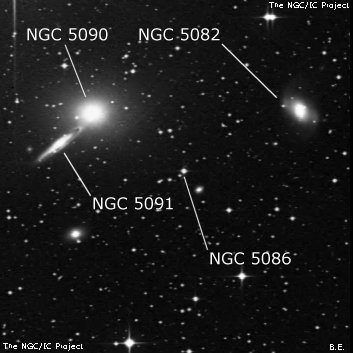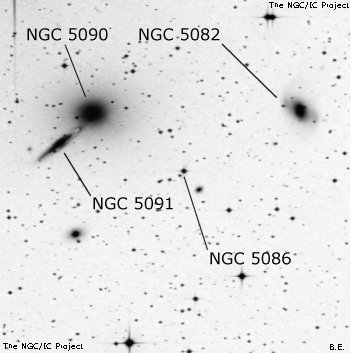NGC/IC Project Restoration Effort
(This is a very very beta version)
NGC5086


Basic Information
Location and Magnitude
Right Ascension: 13:20:59.3
Declination: -43:43:43
Constellation: CEN
Visual Magnitude:
Historic Information
Discoverer: Herschel J.
Year of discovery: 1837
Discovery aperture: 18.3
Observational
Summary description: eF, vS, R, 2nd of 4
Sub-type: *2
Corwin's Notes
=====
NGC 5086 is almost surely the double star 15 arcsec north of JH's position.
There is a possibility that may be the single star with a very faint companion
closer to his position, but this is unlikely. ESO chose a very faint galaxy
(ESO 270-G001) to be NGC 5086, but at 17th magnitude, it is well beyond JH's
limit.
JH saw the other three bright objects in the group (N5082, N5090, and N5091)
on two nights, but only recorded this one once in Sweep 788 on 7 April 1837.
His description ("eF, R, 15 arcsec. The 2nd of a group of 4") makes it the
faintest and smallest of the group. Since there are no galaxies exactly at
his position, I earlier picked out two asterisms that he may have seen.
Having the Herschel Archive in hand, I've finally (June 2015) been able to
check the sweep itself. There are no reduction errors; in particular, if JH
had made a mistake in recording the wire number, the object would be well east
of the group.
There are, however, small systematic offsets in both RA and Dec for the other
three objects from JH's positions. His RA is too large by 1.1 seconds of
time, and his Dec is too far south by 0.7 arcminutes. Correcting his position
for NGC 5086 by these amounts moves it north and west to within about twenty
arcseconds of a double star. It seems likely that this is the object that he
intended as the fourth of the group.



